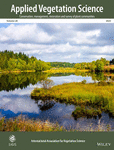Journal list menu
Export Citations
Download PDFs
EDITORIAL
The importance of history for understanding contemporary ecosystems: Insights from vegetation science
- First Published: 23 June 2021
SPECIAL FEATURE: MACROECOLOGY OF VEGETATION
Scientific floras can be reliable sources for some trait data in a system with poor coverage in global trait databases
- First Published: 03 May 2021
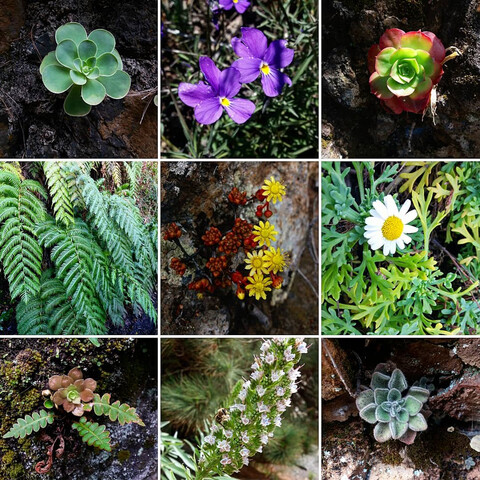
We compared three sources of trait-based research for Canary Island plants: fieldwork, floras and the TRY database. Data from floras accurately estimated field-measured leaf area but not field-measured SLA. From the TRY database, trait values were available for just 3% of our species. Thus, floras remain an important resource in the emerging field of functional island biogeography.
Environmental variables and dispersal barriers explain broad-scale variation in tree species composition across Neotropical non-flooded evergreen forests
- First Published: 19 April 2021
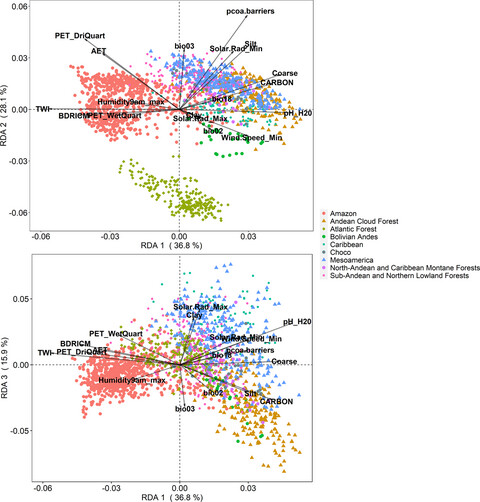
We examined the drivers of tree species variation across Neotropical non-flooded evergreen forests (NNFEFs). Floristic variation was mainly determined by environmental factors. Species have a relatively narrow niche driven by such factors, suggesting that conservation strategies should not be generalized for NNFEFs. Dispersal barriers do not seem to have prevented floristic exchanges, except in the Atlantic Forest.
Plant functional and taxonomic diversity in European grasslands along climatic gradients
- First Published: 19 April 2021

Functional and taxonomic richness of European grassland communities vary considerably across climate gradients. Overall, they follow similar patterns, except at high minimum temperatures and wide temperature ranges where functional richness is highest while taxonomic richness decreases. Variation in effect sizes across climate gradients indicate the importance of climate seasonality in studies describing plant community diversity or disentangling assembly processes.
Niche properties constrain occupancy but not abundance patterns of native and alien woody species across Hawaiian forests
- First Published: 03 May 2021

We explored abundance–occupancy relationships of native and alien woody species across Hawaiian forests, and their underlying drivers. We found that abundant native species were more widespread, and that alien species with longer residence times were more widespread but not more abundant. Our results suggest that impacts of biological invasions in native forests will strengthen over time because of invasion debts.
Synthesizing tree biodiversity data to understand global patterns and processes of vegetation
- First Published: 04 April 2021
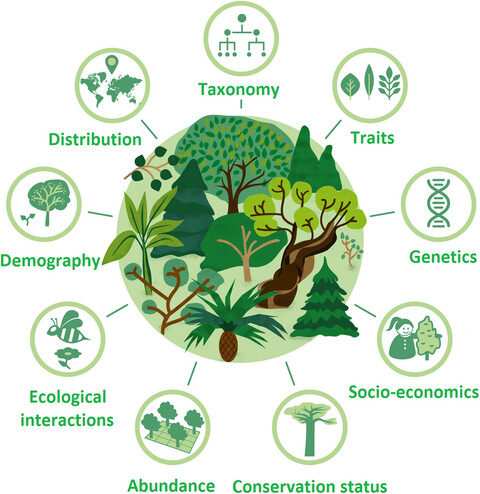
Trees are one of the best-studied plant groups. We show that integrating and imputing available biodiversity data for trees can produce a more holistic understanding of vegetation patterns and processes. Closing remaining data gaps and making data more accessible could further enhance the great potential of trees as a model group for macroecological studies.
Mapping species richness of plant families in European vegetation
- First Published: 26 April 2021
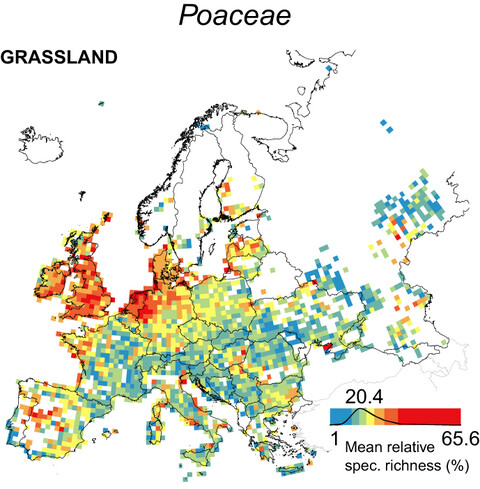
We assessed the relative species richness of vascular plant families within forests, grasslands, scrub and wetlands across Europe based on the European Vegetation Archive data. In many cases, we found distinct spatial patterns in the representation of families within different habitats, which may reflect the biogeographical and evolutionary history of individual families.
Scale dependence of species–area relationships is widespread but generally weak in Palaearctic grasslands
- First Published: 18 May 2021
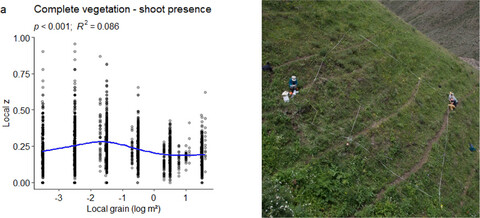
Fine-grain species-area relationships can be well described with the power function, but at closer look the exponent z (a measure of multiplicative beta diversity) might vary across scales. Using nearly 7,000 nested-plot series from Palaearctic open habitats, we found that for rooted presence sampling z strongly increases from 1 m² towards smallest grains, whereas for shoot presence sampling there is typically a weak peak somewhere below 1 m². Peak position was mainly influenced by taxonomic group, latitude and naturalness.
Fine-grain beta diversity of Palaearctic grassland vegetation
- First Published: 22 May 2021
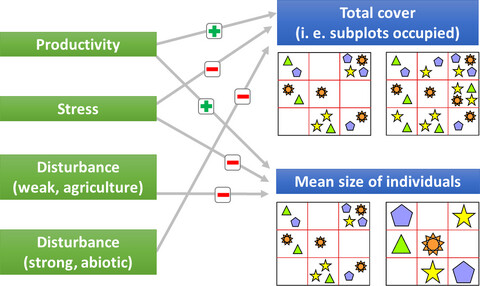
We analysed fine-grain beta diversity of grasslands and other open habitats in the Palaearctic using 4,654 nested-plot series and the z-values of power-law species–area relationships. Mean z-values were highest for lichens, intermediate for vascular plants and lowest for bryophytes. The strongest environmental predictors of z-values were herb layer cover (negative), elevation (positive), rock and stone cover (positive) and the c-value (U-shaped). In a conceptual figure, we summarize the resulting hypotheses how different predictors could influence z-values via mean occupancy.
RESEARCH ARTICLES
Environmental drivers of three neighbouring monodominant stands in Pantanal wetland
- First Published: 10 April 2021

We studied if variations in densities of neighbouring monodominant species, Byrsonima cydoniifolia, Copernicia alba and Tabebuia aurea, are due to flooding and secondarily to soil physicochemical features in the Pantanal. The main drivers for Copernicia alba are high soil pH, inundation and Mg; for Byrsonima cydoniifolia, low Ca and Mg and high fine sand. Only Tabebuia aurea needs high inundation.
Plant community persistence strategy is elevation-specific
- First Published: 19 April 2021
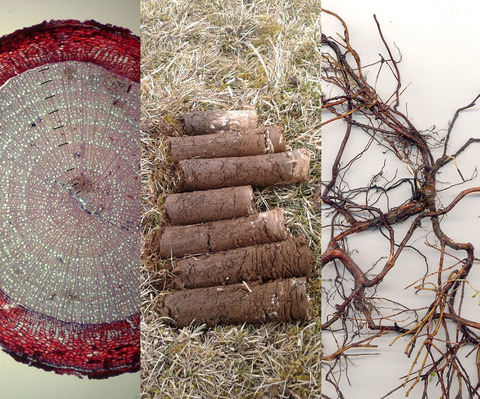
We found that dominance of a certain persistence strategy in grassland plants (soil seed bank, clonality, adult longevity) varied depending on environmental variability. Persistence in lowlands was mainly achieved by persistent and dense soil seed banks along with extended clonal growth (larger spread distances and higher number of offspring). Contrastingly, the main persistence strategy in the alpine communities was increased adult longevity.
Disturbance reshapes the productivity–diversity relationship
- First Published: 04 May 2021
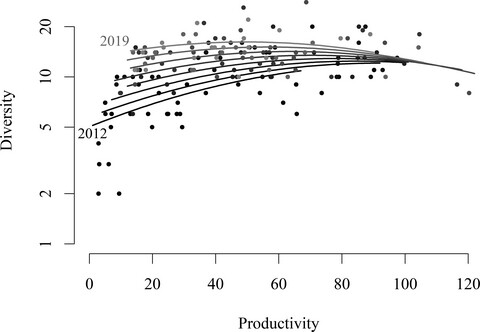
In the grasslands of a sand forest–steppe stand in Hungary, we found a stable linear productivity–diversity relationship before a severe wildfire, and a series of “humped-back” relationships during the post-fire regeneration. Our findings highlight the importance of disturbance history and the contribution of different plant functional groups to changes in productivity and diversity.
Variation in desert shrub foliar pH in relation to drought and salinity in Xinjiang, China
- First Published: 23 April 2021
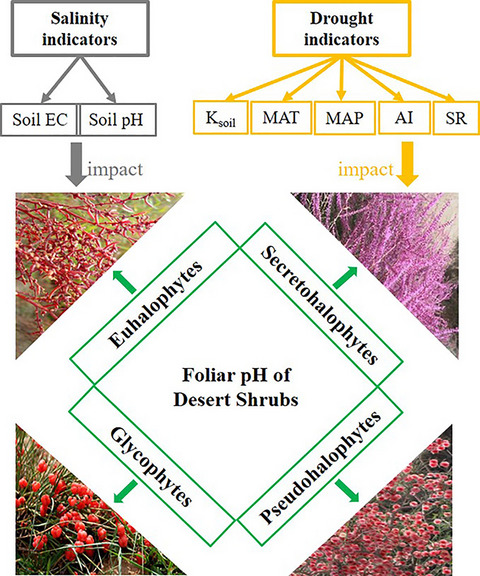
Foliar pH plays a key role in plant eco-physiological processes. At the functional group level, euhalophytes and glycophytes had significantly higher foliar pH than secretohalophytes and pseudohalophytes. Community-weighted mean foliar pH of glycophytes-dominated communities was significantly higher than those of the halophytes-dominated communities. Compared with salinity indicators, drought exerted a much larger impact on foliar pH, particularly in pseudohalophytes and secretohalophytes.
Partitioned beta diversity patterns of plants across sharp and distinct boundaries of quartz habitat islands
- First Published: 07 May 2021
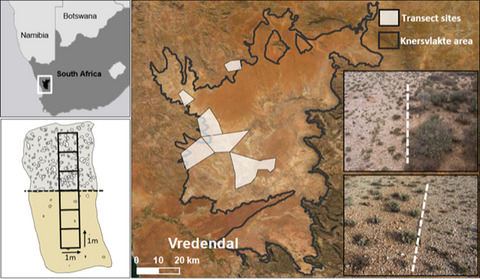
We used small-scale transects to quantify beta diversity patterns of plants across sharp boundaries of habitat islands in an arid ecosystem. We found high beta diversity along all transects, which was mainly due to high species turnover driven by fine-scale edaphic heterogeneity. These results contribute to the research on dwarf ecotones and to habitat island biogeography theory.
Woody species have stronger facilitative effects on soil biota than on plants along an aridity gradient
- First Published: 25 April 2021

The effect of shrubs on soil biota was generally more positive than on plants, and it increased with aridity. Soil nematodes and soil bacteria were directly influenced by shrub presence whereas soil fungi were indirectly influenced by enhanced soil fertility. Aridity was a stronger predictor of changes in species composition than shrub presence.
What can bryophyte diversity on Cangas (ironstone outcrops) teach us?
- First Published: 22 April 2021
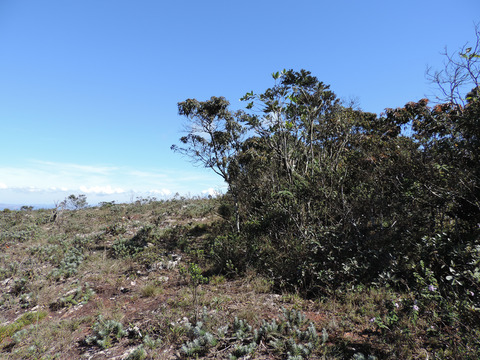
This is the first study to assess bryophyte diversity among Brazilian Cangas, a very harsh environment threatened by anthropogenic disturbances, such as iron ore mining. Due to the local vegetational heterogeneity in Cangas and the regional singularity of each sampling site, we verified a high beta diversity of bryophytes with a high species richness, especially of liverworts in vegetation islands that were not exposed to intense fire cycles.
Mechanisms of community assembly explaining beta-diversity patterns across biogeographic regions
- First Published: 23 April 2021
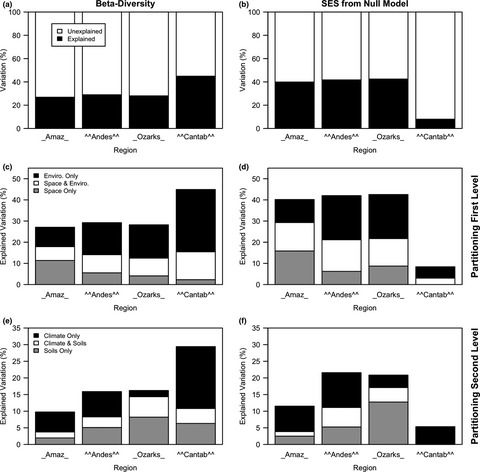
We examined tree beta-diversity in two tropical and two temperate forests. Species pools did not determine beta-diversity. In 3/4 forests, the environment explained more of the variation in beta-diversity than space. Space explained more of the beta-diversity in more diverse/productive forests. Greater alpha or gamma diversity did not result in higher beta-diversity or stronger correlations with the environment.
Rapid post-fire re-assembly of species-rich bryophyte communities in Afroalpine heathlands
- First Published: 24 April 2021
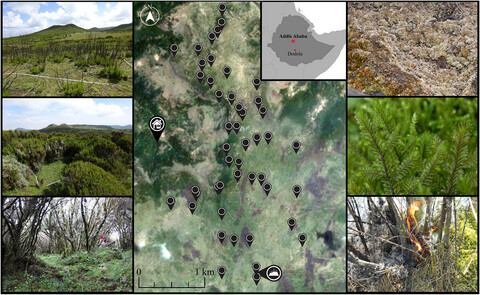
Number of bryophyte species, as well as the cover of large dominant fire-prone bryophytes, increase fast with time since fire in Afro-alpine heathlands. It appears that the current fire and grazing regimes in these heathlands are promoting and maintaining a rich bryophyte flora in a system where the bryophytes are also a main regulator of the fire-return interval.
Unraveling plant strategies in tidal marshes by investigating plant traits and environmental conditions
- First Published: 28 April 2021

Our study identified relationships between different environmental gradients that act on plants and their traits in an estuarine setting. We detected a strong ˈwave-disturbance-inundation gradientˈ: close to the shore, plants had low organ density and high investment into rhizomes, on higher elevations, traits relating to competition were detectable, like high stem mass fraction for instance.
Species-specific trends and variability in plant functional traits across a latitudinal gradient in northern Alaska
- First Published: 03 May 2021
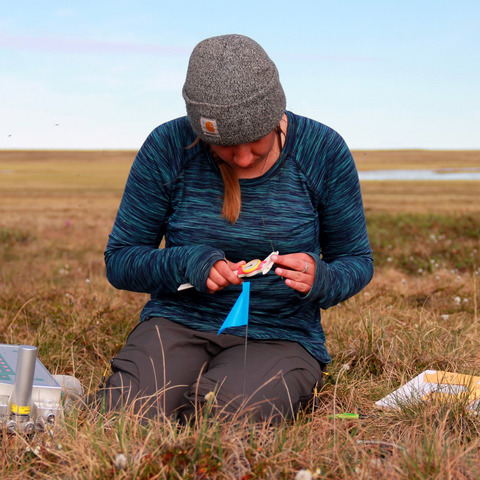
Arctic plants showed considerable variability in functional traits among populations spanning a latitudinal gradient, with strong individualistic trends even for species within the same growth form. In general, plants were taller, had greater leaf area, and thinner leaves in the southern populations. Functional traits also exhibited differences in variance partitioning, with each trait displaying different levels of ITV.
Null-model analysis and changes in species interactions in biocrusts along a successional gradient in the Tengger Desert, northern China
- First Published: 28 April 2021

In arid regions, how interspecific interactions among biocrust-forming mosses, lichens, algae and cyanobacteria change along the successional gradient is largely unknown. Coupled community-level and species-pair-level co-occurrence patterns were innovatively used to investigate the interspecific interactions among biocrust communities. We found that the changes in the biocrust communities support the unimodal version of the stress gradient hypothesis.
Traits as determinants of species abundance in a grassland community
- First Published: 16 May 2021
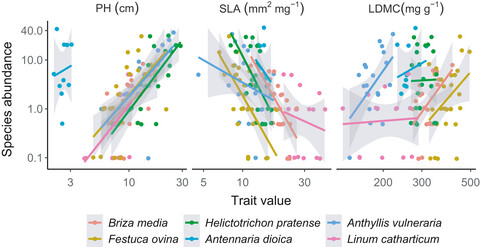
Recent investigations have recognized plant functional traits as important determinants of species abundances, intraspecific trait variability as a driver of species abundance patterns has largely been ignored. This study has demonstrated strong relationship between intraspecific trait variability and local performance of species within communities.
Is plant reproductive efficiency expressed on a continuum of facilitation and competition?
- First Published: 15 May 2021

Interactions between plants can be intensely negative (competition) through to intensely positive (facilitation). While competition is predicted to be important in the evolution of plant strategies, the potential role of facilitation in the expression and evolution of adaptive strategies is poorly understood. We demonstrate that plant reproductive strategies are expressed on a continuum of competitive to facilitative plant interactions.
A comparative study of hard clustering algorithms for vegetation data
- First Published: 17 May 2021
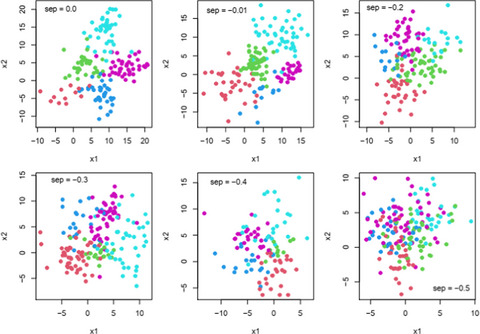
We tested 25 clustering algorithms with three real data sets and six simulated data sets. The clustering algorithms included both hierarchical and non-hierarchical partitioning. Our results illustrated that OPTSIL Flexible-β (−0.1) and OPTPART could prove superior to alternative conventional clustering algorithms when internal evaluation criteria were used to optimize clustering. Bray–Curtis dissimilarity proved superior to other distance measures for heterogeneous data sets.
REPORTS
ausplotsR: An R package for rapid extraction and analysis of vegetation and soil data collected by Australia's Terrestrial Ecosystem Research Network
- First Published: 22 May 2021
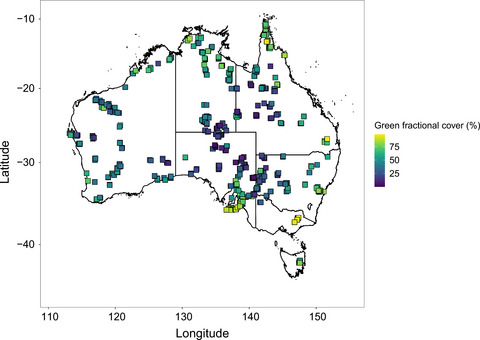
The Terrestrial Ecosystem Research Network (TERN), Australia's national land ecosystem monitoring programme, has launched ausplotsR — an R package for live extraction, preparation, visualisation and analysis of TERN ecosystem monitoring data. Through ausplotsR, users can directly access plot-based data on vegetation and soils across Australia from over 600 TERN monitoring sites, such as cover by species and physical sample barcode numbers.
RESEARCH ARTICLE
Outcomes of facilitative plant interactions in shrublands of NW Patagonia, Argentina
- First Published: 30 May 2021
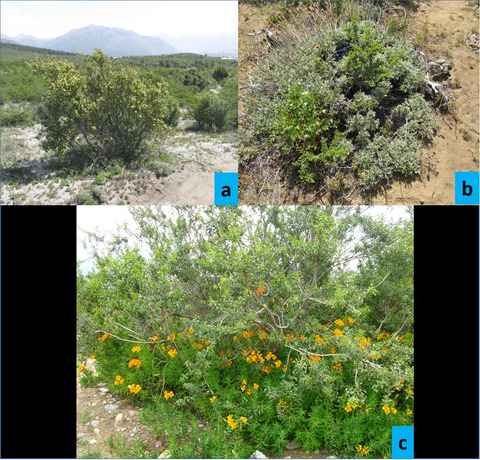
The study examined the plant–plant interaction networks in NW Patagonian shrublands during two consecutive years. We analyzed if nurse species groups (evergreen and deciduous) mediate the facilitated species composition. We found that networks were not nested and had many generalist species (nurses and facilitated). It implies that the disappearance of any nurse species would not change maintenance of the community.






